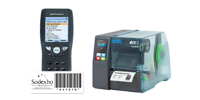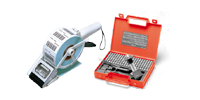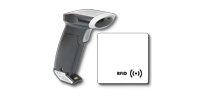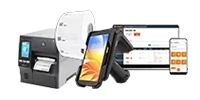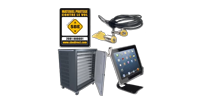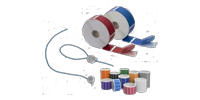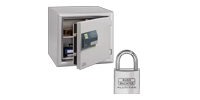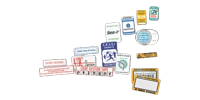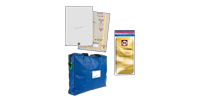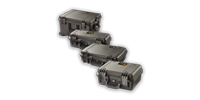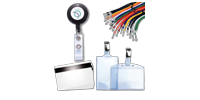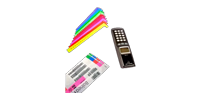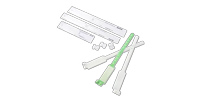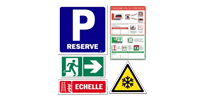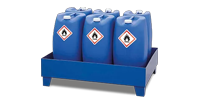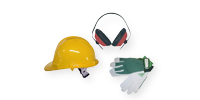With the massive development of RFID products, it is important to understand how the technology works and how to use it in the most efficient way. How does the technology work? What is the most effective support in terms of how it is used? What chip to choose? To best find your way among the wide range of media and chips, here are a few simple points to which SBE responds:
1. What does RFID mean?
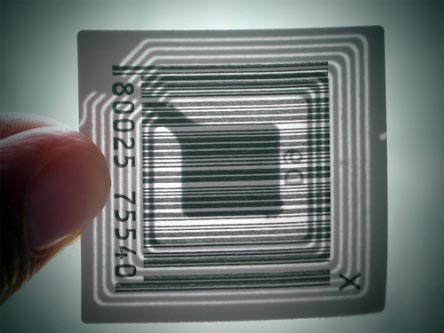
Every day we use RFID products without knowing: via transport cards, anti-theft labels in stores, security badges or more recently contactless keys for our car.
This technology has the advantage of saving users time and allowing quick reading of data. But do you really know what RFID is?
RFID or Radio Frequency Identification is a method to remember and recover remote data. The system is activated by a transfer of electromagnetic energy between a radio label and an RFID transmitter. The radio label, also called RFID tag, is made up of an electronic chip and an antenna that receives the radio signal emitted by the reader also equipped with RFID technology. The components allow both reading and responding to the signals.
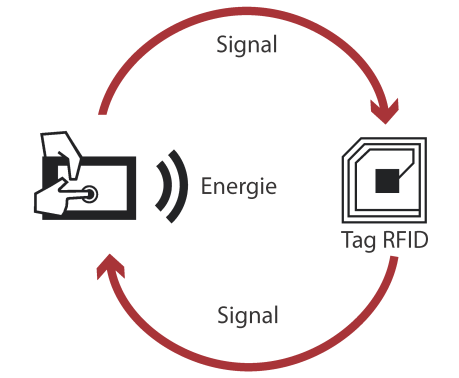
RFID CHIP OU NFC CHIP?
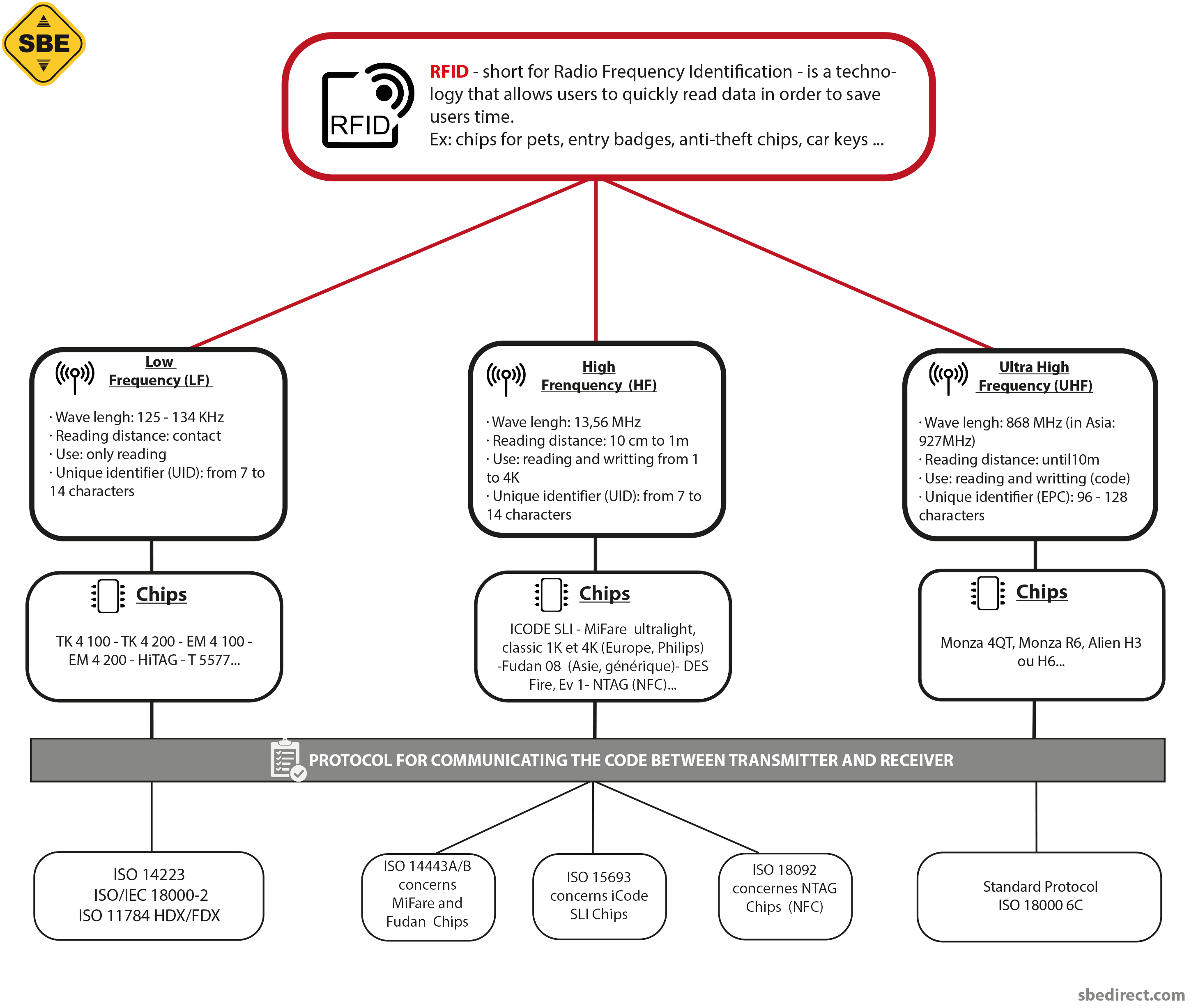
NFC stands for Near-Field Communication. NFC is also based on RFID protocols. The main difference with RFID is that an NFC device can act not only as a reader, but also as a tag (card emulation mode). In peer-to-peer mode, it is also possible to transfer information between two NFC devices.
NFC systems operate on the same frequency as HF RFID systems (13.56 MHz). Therefore, there are only limitations in reading range at short distances. This is why NFC devices must be very close to each other, usually no more than a few centimeters. NFC is often used for secure communications, for example for access control or in the consumer sector for contactless payment.
2. For wich media for RFID CHIP and NFC chip?
Today RFID is developing in different media:
| Types of surface | Lenses |
|---|---|
|
|
|
|
|
|
|
Bracelets |
|
|
|
|
Subcutaneous chips |
|
For each different surface, the chip may be for single-use (reading only) or rewritable (reading and writing with memory). To choose the chip type, you must first choose the frequency according to the desired use.
3. Communication by the chip.
Frequency is the feature that allows communication between the chip and the antenna. But all chips on the market do not have the same functionality.
The chips differ largely in their operating frequency and the reading distance. The higher the frequency, the greater the reading distance. Depending on these elements, the chip will be more or less powerful and more or less expensive.
Three types of frequencies are used for RFID chips:
Low frequency (125 Khz),
High frequency (13.56 Mhz)
Very high frequency (UHF).
| Type of frequency | Frequency of function | Reading distance (m) | Transfer rate | Standards |
|---|---|---|---|---|
|
Bass frequency |
< 135 kHz | 0.5 | 1kb/s | ISO 14223/1, ISO 18000-2 |
|
High frequency |
13.56 Mhz | 1 | 25kb/s | ISO 14443, ISO 15693, ISO 18000-3 |
|
Very high frequency |
863 to 915 Mhz | 3 to 6 | 28kb/s | ISO 18000-6 |
A number of manufacturers share the market, offering chips with increasingly high performance. This technology is now standardized and present in many everyday objects.
Discover our 2 RFID readers:
The UFH RFID reader can read quickly and remotely your badges, cards and other RFID transmitters inside and outside.
The USB RFID reader adapted for the fast contactless reading of badges and cards low frequency and high frequency (LF and HF).
4. The capabilities of the RFID chip.
This technology has three versions:
- Passive RFID
- Semi-Passive RFID
- Active RFID
Passive RFID works in read-only since the chip does not have a battery and must be moved towards the reader to be read. A powerful electromagnetic signal is sent to it, enabling the RFID chip to be activated and the information contained in it to be read.
On the other hand, active RFID works with an energy source such as a battery or mini battery, which allows the card to be read over longer distances. This technique is mainly used for the traceability of people, vehicles or logistical traceability.
Like active RFID, semi-passive RFID is powered by an energy source. However, the battery feeds the RFID chip at regular time intervals. It does not send out a signal. This technology is useful for food traceability, especially to record changes in temperature during transport.
There are different RFID classes:
|
Class |
Tag | Fonction | Avantages / inconvénients |
|---|---|---|---|
|
Classe0 Classe1 |
Passive | Reading the unique identifier | Less expensive than active tags, useful for reading a large volume of goods at a short distance. However, the reading distance is also a disadvantage because the reader must be nearby. |
| Classe2 | Passive | Additional functions: reading, writing with memory | |
| Classe3 | Semi-passive | Tags assisted by a battery | More efficient and less expensive than active RFID. However, there is still some uncertainty around how reliable it is for traceability. |
| Classe4 | Active | Communication without transiting a central server | Independent technology with clean energy that allows long-distance reading. The disadvantages are the cost of labels and their limited duration, the low security of the waves emitted, and its impact on health. |
| Classe5 | Checking | Feeds class 0 to 3 tags and communicate with class 4 tags. |
The most common chip: The Mifare.
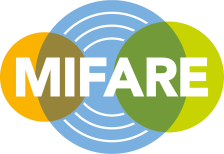
Mifare is the most widespread smart contactless chip technology in the world and is manufactured by NXP. Mifare is standard for the RFID card.
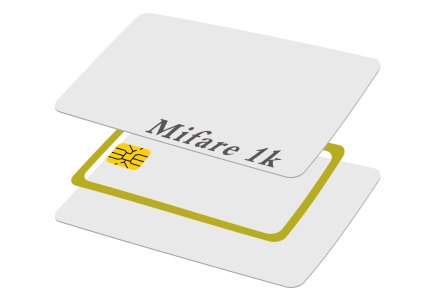
The four types of Mifare chip:
|
Type |
Frequency | Storage | Characteristics |
|---|---|---|---|
|
Mifare Ultralight |
13,56 Mhz | 512 bits (64 bytes = 64 characters) | Read-only. No failsafe like in the Mifare Classic. Used mainly for disposable tickets. Class 0/1 |
|
Mifare classic 1K |
13,56 Mhz | 768 bytes (768 car.) | Security block. Ability to read or write data, but also to increase or decrease values. Writing distance of 10 cm. The first version of Mifare. |
|
Mifare classic 4K |
13,56 Mhz | 4 KB (4096 characters) | Security block. Ability to read or write data, but also to increase or decrease values. Writing distance of 10 cm. Class 2 |
|
Mifare DESFire Ev1 |
13,56 Mhz | 2 KB, 4 KB ou 8 KB | Contactless data transfer without requiring energy or a battery. This chip has a higher level of security compared to others. The card takes 28 applications each supporting 32 files. The size of each file is defined at the time of creation. Practical and flexible product. |
Which chips are also available on the market?
Mifare chips are not the only ones on the market, there are other types and the most well-known ones are:
|
Frequency |
Chip type | Characteristics |
|---|---|---|
| 125 KHz | EM 4200 (EM Microelectronic) |
128 bits in read only, low frequency contactless with identification device. It is gradually replacing EM 4100/4102 and EM 4005/4105. Very low energy consumption and high performance. Class 0/1 |
| 125 KHz | EM 4100 (EM Microelectronic) |
64 bits in only programmable reading, low consumption. Small chip for a better implementation. Class 0/1 |
| 125 KHz | T 5577 (Atmel) |
363 bits. Reading and writing chip from a reader. Class 2 |
| 125 Khz | HiTag (NXP) |
From 64 bits to 2048 bits. Effective in transmitting data in complex environments. Several versions including hitag S, hitag 2 and hitag 1. The difference is essentially in memory size and reading/writing function. |
To know well the limits and the dangers of RFID.
To be able to communicate with RFID tags, you need a fixed or portable reader. The purpose of this reader is to read the data if it has been recorded in the design or to modify the content if the chip allows.
|
Types |
Characteristics | Reading Distance | Frequency |
|---|---|---|---|
| Fixed | In the form of a portico or kiosk, particularly at a supermarket till, for access control, in the library. | Distance: 25 cm, Short: up to 1 m, Medium distance: up to 9 m Long-range: hundreds of meters. |
Low-frequency LF 125 Khz High-frequency HF 13.56 Mhz Very high-frequency UHF 868 Mhz |
| Portable | Scanner portable to read labels manually. Labels do not need to be moved. | A few centimeters to a few meters |
Low-frequency LF 125 Khz High-frequency HF 13.56 Mhz Very high-frequency UHF 868 Mhz |

A portable reader with RFID port.
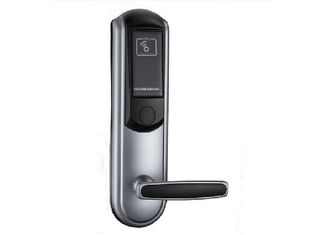
Fixed handle reader for access control.
RFID on a daily basis.
For years, RFID has been mainly present in security through the control of corporate access or to combat in-store theft.
Today, it has the main aim of identifying:
- Items against theft, in stock management
- People, thanks to contactless cards and passports
- Pets using subcutaneous electronic chips
RFID is also found in information and advertising in some cities such as Tokyo where 10,000 RFID markers have been installed on the streets to inform pedestrians while traveling or to display promotions on the street. Paris has inserted RFID chips into 95, 000 trees for monitoring.
Daily Improvement

To simplify everyday life, companies introduced RFID into many everyday objects such as electronic motorway tolls, public transit (Navigo Pass), biometric passports, and contactless payment.
In the future, RFID will spread to other areas such as medicine, in public waste disposal, or connected to Wi-Fi connection. Esso has, for example, put in place a system that would allow fuel to be supplied thanks to a reader in the car.
Combating fraud
RFID also allows you to combat shoplifting through discrete anti-theft labels products and packaging.
RFID: improved corporate performance.
Many distributors and logistics companies are finding new uses for this technology: airport baggage management, shop inventories, shelf-stacking and overall stock management.
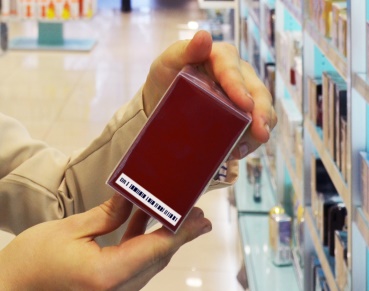
Product traceability
It is possible to track a product with an RFID label from its manufacture until it is sold in store. Analyzing its data helps optimize the supply chain and save time and money.
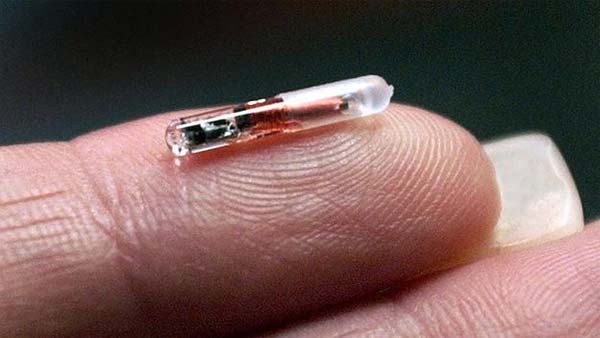 One of the oldest uses for this type of process dates back to the 1980s where it was used to identify and track livestock. RFID technology monitors animals from birth to slaughter without fraud, for better traceability for the consumer and the farmer. Today, more and more subcutaneous chips are inserted under the skin of certain animals, especially to better identify pets (in case of loss) or to monitor endangered animals.
One of the oldest uses for this type of process dates back to the 1980s where it was used to identify and track livestock. RFID technology monitors animals from birth to slaughter without fraud, for better traceability for the consumer and the farmer. Today, more and more subcutaneous chips are inserted under the skin of certain animals, especially to better identify pets (in case of loss) or to monitor endangered animals.
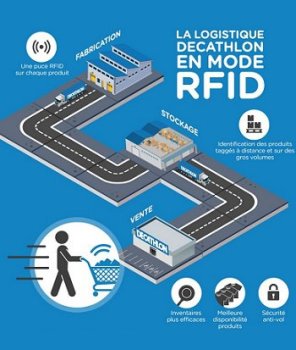 In the industry, this label is placed on the product or on its packaging during its manufacture. The chip allows you to trace the product during its journey: during transport, storage or placement on a store shelf. This technique allows companies to better estimate the cost and duration of the supply chain. This makes it possible to anticipate malfunctions and obtain a history of the product in case of damage.
In the industry, this label is placed on the product or on its packaging during its manufacture. The chip allows you to trace the product during its journey: during transport, storage or placement on a store shelf. This technique allows companies to better estimate the cost and duration of the supply chain. This makes it possible to anticipate malfunctions and obtain a history of the product in case of damage.
Inventory Management
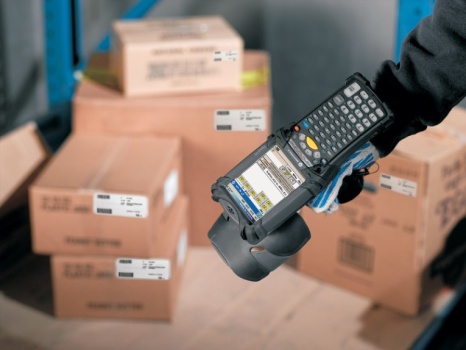
In stores and factories that have stock, the RFID tag is the means to quickly analyze the flow. The computerized system allows for a trace of flow: from supply to sale. The till communicates with the computer updates the inventory list.
 This technique allows users to better control the cost of their stock. The technology notifies users when the product has arrived and been dispatched. In case of theft in stock, it is possible to trace the journey of the product. In addition to supply, shops can also speed up shop inventories. Companies such as Tesco, use robots equipped with RFID readers to read chips and perform inventories.
This technique allows users to better control the cost of their stock. The technology notifies users when the product has arrived and been dispatched. In case of theft in stock, it is possible to trace the journey of the product. In addition to supply, shops can also speed up shop inventories. Companies such as Tesco, use robots equipped with RFID readers to read chips and perform inventories.
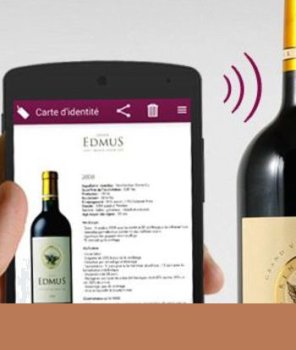 RFID tags allow users to recognize a product and obtain all its characteristics. This process is used particularly for authenticating wine labels to prevent theft and fraud. To optimize its logistics chain, companies like Decathlon use RFID technology to recognize products and exchange them without receipts.
RFID tags allow users to recognize a product and obtain all its characteristics. This process is used particularly for authenticating wine labels to prevent theft and fraud. To optimize its logistics chain, companies like Decathlon use RFID technology to recognize products and exchange them without receipts.
The limits of RFID.
Like any technology, RFID has its own limits. The dissemination of information poses a problem for privacy issues. An unsecured card can be easily copied to recover or modify sensitive data.
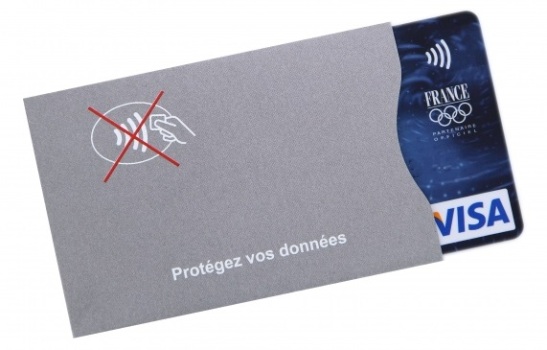
As a result, it is necessary to provide more security, and for that, we need to:
- Protect RFID cards and badges using protective cases that prevent data retrieval,
- Limit the lifespan of RFID card data (Navigo card only records the last three stations so that individuals cannot be tracked and to avoid fraud),
- Encrypt or encrypt data to avoid risking disclosing sensitive information such as identity information, banking data, etc.
- To identify a card, add a photo in order to recognize the owner of the card or print a hologram to authenticate the card.
Also, not all chips are legible at the same distance and under the same conditions. Wave transmission is limited through certain walls and metals. Some metals may, for example, protect the RFID chip from all fraud.
This technology still leaves a lot to be desired. The possibilities of use are immense whatever the business area. Chips can be encoded by RFID printers or RFID readers to change information (identifiers, sensitive data).

